
Architecture Live VI (Alumni Networks-Revisited)
In mid-May, a two-day workshop took place at the Vienna University of Applied Arts, focusing on the position of art and design schools in a new, extremely interconnected, networked world. Under the guidance of graduates of Hadid, Lynn, and Prix (and their predecessors Hollein and Holzbauer), students designed a new building for the university to replace the existing one, which would meet the future needs of teaching art, architecture, and design. A panel discussion on "The Future of Architectural Education" was organized as part of a public exhibition and project presentations, featuring foreign guests (Odile Decq, Sylvia Lavin, Bart Lootsma, Jeffrey Kipnis).
The two-day workshop was led by 12 graduates [1], who collaborated with students to design a new building for the university, while also aiming to create new "networks" between alumni and current students. The project brief assumed the design of a new internal organizational structure for the institution, designs for flexible arrangements to facilitate knowledge exchange and experiences, and reflections on the local architectural arrangement. During the presentation of completed projects, their authors often sought a balance between the openness and enclosure of space, both in terms of teaching needs, independent work, student socialization, and in terms of connectivity with public space. Generally, the work exhibited a relatively high degree of expressiveness, which was influenced by the short time available to develop the project, as Sylvia Lavin aptly pointed out. Most models can be found in the image appendix.
In addition to this, the aforementioned extremely interesting discussion on architectural education took place from the perspective of architect-educators and architecture theorists. Both American (Jeff Kipnis, Sylvia Lavin) and European (Odile Decq, Bart Lootsma) views on the issue were represented.
The discussion was moderated by Jeffrey Kipnis, who in his introductory paper outlined the main themes of the debate: the role of architecture and architectural education in the present and future, the form and significance of the building for the school of architecture, and the importance of "networking" for the current development of architecture.
Kipnis primarily maintained that the building of the school of architecture as a typology should be a particular subject of interest for architects (as opposed to typologies such as libraries or hospitals), as the building of the school of architecture represents the values and perceptions of architects and architecture before students and the surrounding world.
Moreover, Kipnis selected several examples of new architecture schools, attempting to further develop his thesis on the growing conceptualization, delocalization, and virtualization of architecture in conditions where the phenomena of location-space-place are relativized and authentic exchange and contact occur over long distances or in virtual space. The question remains whether and how architecture should respond to this phenomenon (examples include the Design, Architecture, Art and Planning School in Cincinnati; Ontario School of Art and Design, Toronto; Singapore Pavilion for Expo 2010 in Shanghai, Design Act).
Architecture School as a Building
The question of the form of the building of the architecture school seemed rather insignificant to most discussants, who emphasized the flexibility and adaptability of space. Odile Decq outlined the thesis that a heavily "designed" school affects students, who begin to imitate its effects. By attempting to express themselves through the architecture school, architects often end up hindering regular operation and flexibility. She saw a box or possibly an industrial building as ideal.
Sylvia Lavin refused to address the issue of "architecture school building," as it is merely a "problem of architects' self-representation;" however, the public perceives the architecture school's project like any other cultural project such as a museum. She accused architects of excessive self-centeredness and expressed her frustration over the inability of architecture to engage contemporary society while speaking about Cesare Pelli as a creator of contemporary American "high culture." Another observation she made was that architecture schools often possess a specific culture that persists independently of the building of the school (e.g., the building of the architecture school at Yale by Paul Rudolph, while the faculty itself is very conservative).
Architecture School and the Role of Architecture in the Present and Future
Bart Lootsma opened the issue of the Bologna Process in European universities, which are becoming "cheap copies of American universities." However, the entire process also offers possibilities, such as using virtual networks to connect emerging master's programs or to support student mobility. He further emphasized the significance of research in architecture and postgraduate studies. Through research and a broader reflection on socio-cultural dimensions, universities should distinguish themselves from professional schools (the system in Germany, the Netherlands) that can provide students with technical knowledge and skills but lack cultural and social dimensions.
In this regard, Odile Decq quickly mentioned the rapidly changing teaching styles, which on one hand are persistent, while on the other hand incorporate sociology, later aesthetics, and the question is what the future will hold, whether it will be a combination of these or a discourse on "networking"?
The debate then turned to the Universität für Angewandte Kunst itself as a specific type of school that provides space for people who feel attracted to a higher degree of speculation, searching for new ideas, and pushing boundaries. In addition, there are schools that produce professional architects as a category that is no less necessary and important.
Jeffrey Kipnis briefly mentioned the differences between American and European universities, where American ones lead in research and the search for new ideas, while Europe is most progressive in architectural practice due to a deeper cultural foundation. He defined architecture as a cultural practice aimed at a narrow, educated segment of society. In contrast, Bart Lootsma pointed out social housing construction and urbanism as circumstances that significantly shaped architectural practice in Europe. Well-known architectural firms still design residential complexes, etc.
As a significant problem in the United States, Kipnis named the crisis package of the Obama administration, from which the program to support the arts was omitted, and a crucial task for the future of architectural education is to prevent the decline of speculative and innovative ideas due to a lack of financial resources. Sylvia Lavin highlighted the changing global arrangement, reorganization, and hierarchy of cultural values. Europe and the United States have lost their dominance in the cultural field, and some parts of the world are no longer willing to communicate with the Western world. Architecture as a way of thinking, as a way of capturing material culture, as a way of transforming new knowledge into a visible form is one of the significant tools for responding to the new global arrangement.
Network/networking
The essence of the discourse on "networking" is that a person is locally a subject of influences that are not local, and these forces create extensive structures in which we participate without perceiving it immediately (Kipnis). This discourse can be related to economics, psychosociology, semiotics, with the specificity of today being the digitization of these networks and their transfer into virtual space. This phenomenon can be utilized in academia, as Bart Lootsma mentioned, for connecting and intensively communicating between different fields. Odile Decq rejected the entire discourse, stating that people are unable to do without immediate social contact. According to Sylvia Lavin, the main task for architectural education is to encourage students to understand the world not only from the perspective of their own person ("I," "facebook," "myspace," "my hotel," etc.), as that is in itself a "network phenomenon," but to teach them to perceive the broader socio-cultural contexts of the contemporary world.
[1] Erich Bernhard, Caren Ohrhallinger, Wolfgang Tschapeller, Thomas Vietzke, and Susanne Zottl Studio Hadid/Holzbauer; Hubert Hermann, Hubert Klumpner, and Max Rieder Studio Lynn/Hollein; Herwig Baumgartner, Marie Therese Harnoncourt, Barbara Imhof, and Michael Wallraff Studio Prix.
The two-day workshop was led by 12 graduates [1], who collaborated with students to design a new building for the university, while also aiming to create new "networks" between alumni and current students. The project brief assumed the design of a new internal organizational structure for the institution, designs for flexible arrangements to facilitate knowledge exchange and experiences, and reflections on the local architectural arrangement. During the presentation of completed projects, their authors often sought a balance between the openness and enclosure of space, both in terms of teaching needs, independent work, student socialization, and in terms of connectivity with public space. Generally, the work exhibited a relatively high degree of expressiveness, which was influenced by the short time available to develop the project, as Sylvia Lavin aptly pointed out. Most models can be found in the image appendix.
In addition to this, the aforementioned extremely interesting discussion on architectural education took place from the perspective of architect-educators and architecture theorists. Both American (Jeff Kipnis, Sylvia Lavin) and European (Odile Decq, Bart Lootsma) views on the issue were represented.
The discussion was moderated by Jeffrey Kipnis, who in his introductory paper outlined the main themes of the debate: the role of architecture and architectural education in the present and future, the form and significance of the building for the school of architecture, and the importance of "networking" for the current development of architecture.
Kipnis primarily maintained that the building of the school of architecture as a typology should be a particular subject of interest for architects (as opposed to typologies such as libraries or hospitals), as the building of the school of architecture represents the values and perceptions of architects and architecture before students and the surrounding world.
Moreover, Kipnis selected several examples of new architecture schools, attempting to further develop his thesis on the growing conceptualization, delocalization, and virtualization of architecture in conditions where the phenomena of location-space-place are relativized and authentic exchange and contact occur over long distances or in virtual space. The question remains whether and how architecture should respond to this phenomenon (examples include the Design, Architecture, Art and Planning School in Cincinnati; Ontario School of Art and Design, Toronto; Singapore Pavilion for Expo 2010 in Shanghai, Design Act).
Architecture School as a Building
The question of the form of the building of the architecture school seemed rather insignificant to most discussants, who emphasized the flexibility and adaptability of space. Odile Decq outlined the thesis that a heavily "designed" school affects students, who begin to imitate its effects. By attempting to express themselves through the architecture school, architects often end up hindering regular operation and flexibility. She saw a box or possibly an industrial building as ideal.
Sylvia Lavin refused to address the issue of "architecture school building," as it is merely a "problem of architects' self-representation;" however, the public perceives the architecture school's project like any other cultural project such as a museum. She accused architects of excessive self-centeredness and expressed her frustration over the inability of architecture to engage contemporary society while speaking about Cesare Pelli as a creator of contemporary American "high culture." Another observation she made was that architecture schools often possess a specific culture that persists independently of the building of the school (e.g., the building of the architecture school at Yale by Paul Rudolph, while the faculty itself is very conservative).
Architecture School and the Role of Architecture in the Present and Future
Bart Lootsma opened the issue of the Bologna Process in European universities, which are becoming "cheap copies of American universities." However, the entire process also offers possibilities, such as using virtual networks to connect emerging master's programs or to support student mobility. He further emphasized the significance of research in architecture and postgraduate studies. Through research and a broader reflection on socio-cultural dimensions, universities should distinguish themselves from professional schools (the system in Germany, the Netherlands) that can provide students with technical knowledge and skills but lack cultural and social dimensions.
In this regard, Odile Decq quickly mentioned the rapidly changing teaching styles, which on one hand are persistent, while on the other hand incorporate sociology, later aesthetics, and the question is what the future will hold, whether it will be a combination of these or a discourse on "networking"?
The debate then turned to the Universität für Angewandte Kunst itself as a specific type of school that provides space for people who feel attracted to a higher degree of speculation, searching for new ideas, and pushing boundaries. In addition, there are schools that produce professional architects as a category that is no less necessary and important.
Jeffrey Kipnis briefly mentioned the differences between American and European universities, where American ones lead in research and the search for new ideas, while Europe is most progressive in architectural practice due to a deeper cultural foundation. He defined architecture as a cultural practice aimed at a narrow, educated segment of society. In contrast, Bart Lootsma pointed out social housing construction and urbanism as circumstances that significantly shaped architectural practice in Europe. Well-known architectural firms still design residential complexes, etc.
As a significant problem in the United States, Kipnis named the crisis package of the Obama administration, from which the program to support the arts was omitted, and a crucial task for the future of architectural education is to prevent the decline of speculative and innovative ideas due to a lack of financial resources. Sylvia Lavin highlighted the changing global arrangement, reorganization, and hierarchy of cultural values. Europe and the United States have lost their dominance in the cultural field, and some parts of the world are no longer willing to communicate with the Western world. Architecture as a way of thinking, as a way of capturing material culture, as a way of transforming new knowledge into a visible form is one of the significant tools for responding to the new global arrangement.
Network/networking
The essence of the discourse on "networking" is that a person is locally a subject of influences that are not local, and these forces create extensive structures in which we participate without perceiving it immediately (Kipnis). This discourse can be related to economics, psychosociology, semiotics, with the specificity of today being the digitization of these networks and their transfer into virtual space. This phenomenon can be utilized in academia, as Bart Lootsma mentioned, for connecting and intensively communicating between different fields. Odile Decq rejected the entire discourse, stating that people are unable to do without immediate social contact. According to Sylvia Lavin, the main task for architectural education is to encourage students to understand the world not only from the perspective of their own person ("I," "facebook," "myspace," "my hotel," etc.), as that is in itself a "network phenomenon," but to teach them to perceive the broader socio-cultural contexts of the contemporary world.
[1] Erich Bernhard, Caren Ohrhallinger, Wolfgang Tschapeller, Thomas Vietzke, and Susanne Zottl Studio Hadid/Holzbauer; Hubert Hermann, Hubert Klumpner, and Max Rieder Studio Lynn/Hollein; Herwig Baumgartner, Marie Therese Harnoncourt, Barbara Imhof, and Michael Wallraff Studio Prix.
The English translation is powered by AI tool. Switch to Czech to view the original text source.
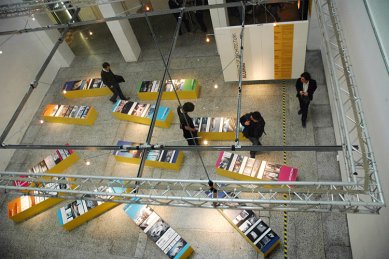
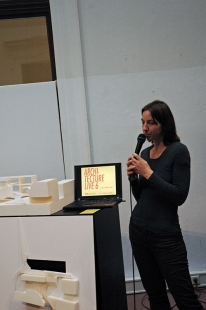
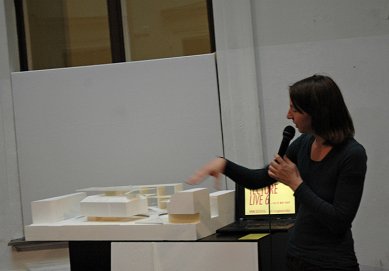
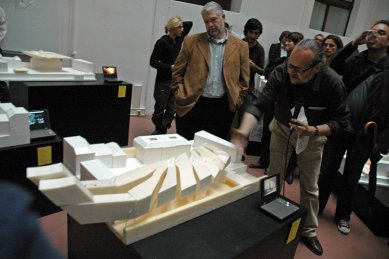
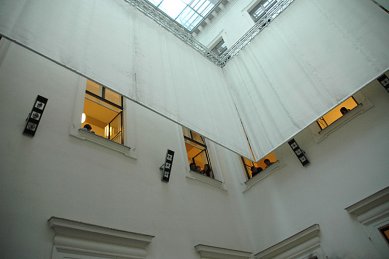
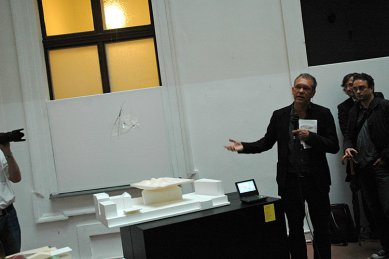

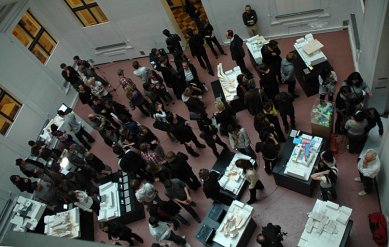
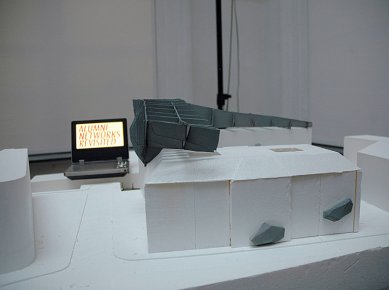
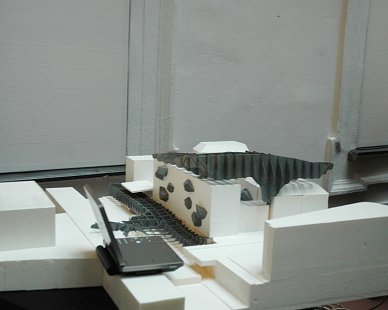
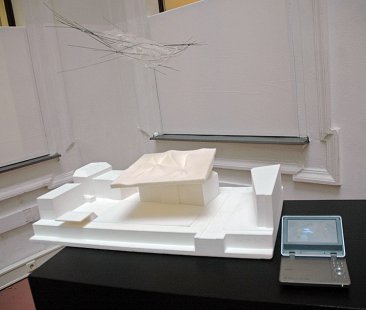


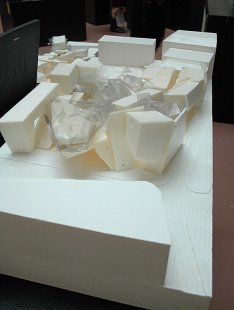
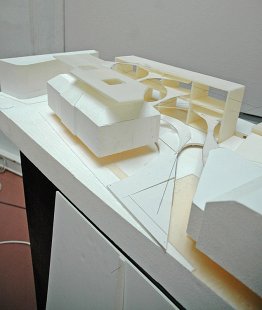
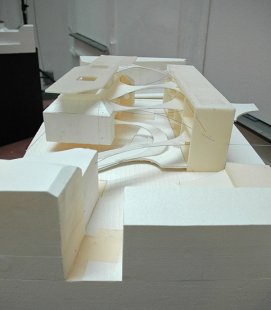
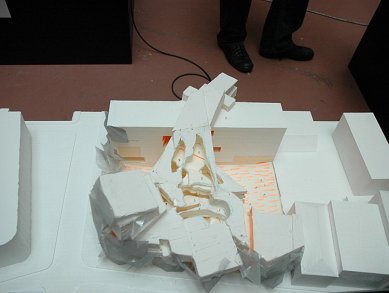
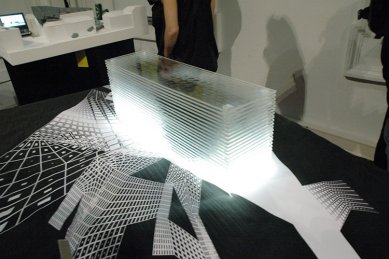
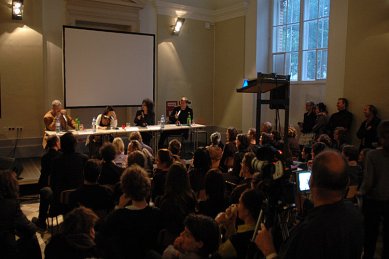
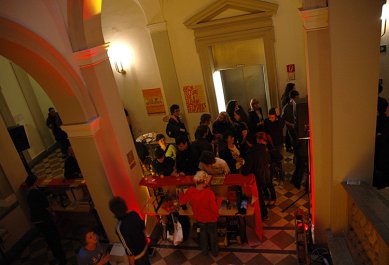
0 comments
add comment






